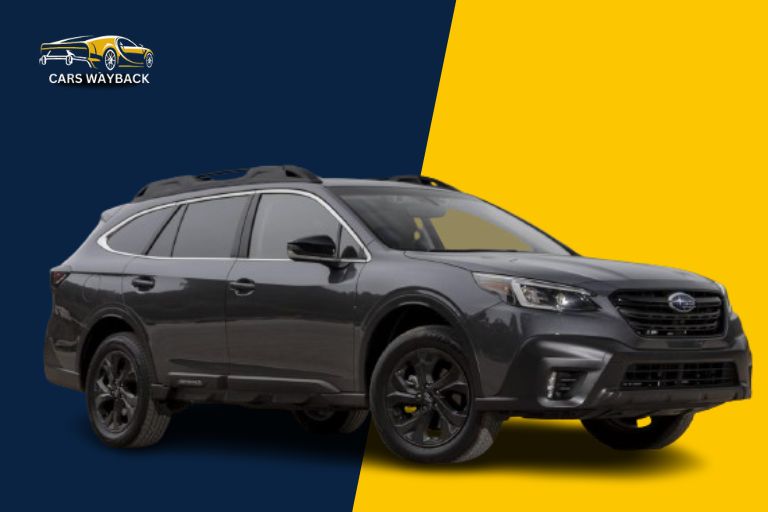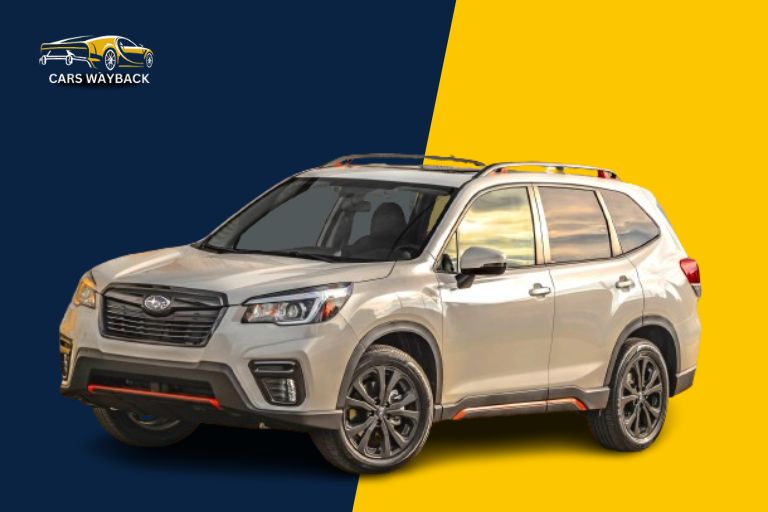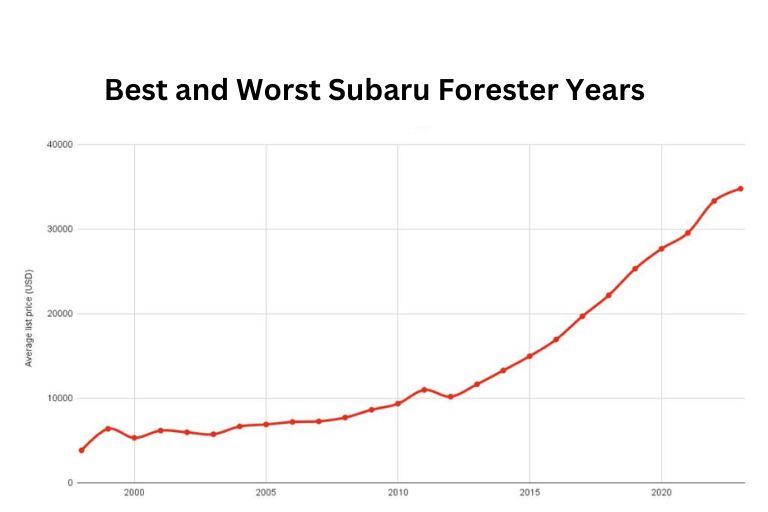The Best and Worst Subaru Forester Years has carved a niche for itself in the competitive world of SUVs, winning over drivers with its blend of practicality, reliability, and adventurous spirit. With each passing year, Subaru fine-tunes its beloved Forester model, introducing new features and enhancements that cater to the ever-evolving needs of modern drivers.
But like any long-standing automotive icon, not all years are created equal. In this article, we delve into the best and worst Subaru Forester years to help you navigate through the sea of options and make an informed decision when looking to invest in this versatile vehicle.
Join us as we explore the highs and lows of different model years, uncovering which ones stand out as fan favorites and which ones may leave something to be desired for discerning car enthusiasts.
The Forester was introduced at the Tokyo Motor Show in November 1995 as the Streega concept, and available for sale in February 1997 in Japan, and to the US market in 1997 for MY1998.
You can also read:- Best Subaru Outback Years
Best and worst Subaru Forester Years
The first-generation Subaru Forester, introduced in 1997, stood out for its boxy design and practicality. It offered standard all-wheel-drive and impressive ground clearance, making it a versatile choice for both city driving and off-road adventures.
The interior was criticized for being somewhat utilitarian compared to competitors.
| Generation | Years |
| 1st generation (SF) | 1998-2002 |
| 2nd generation (SG) | 2003-2008 |
| 3rd generation (SH) | 2009-2013 |
| 4th generation (SJ) | 2014-2018 |
| 5th generation (SK) | 2019-Present |
The new platform improved handling and comfort levels while also introducing advanced safety features as standard across all trims. With each generation iteration, Subaru continues to evolve the Forester without compromising its reputation for reliability and capability.
Subaru Forester Best, Neutral, and Worst Years
The best years for the Subaru Forester are often considered to be the 2014 and 2019 models. The 2014 model received high praise for its reliable performance, excellent safety features, and comfortable interior.
The 2019 model stood out with its updated technology, improved fuel efficiency, and enhanced handling capabilities.
| Generation | Best Years | Neutral Years | Worst Years |
| 1st generation (SF) | 200020012002 | N/A | 19981999 |
| 2nd generation (SG) | 200320042005 | 20072008 | 2006 |
| 3rd generation (SH) | 20112012 | N/A | 200920102013 |
| 4th generation (SJ) | 20162018 | N/A | 201420152017 |
| 5th generation (SK) | 202120222023 | 2020 | 2019 |
In terms of neutral years, the 2008 and 2013 models tend to fall in this category. While these years didn’t receive major accolades or criticisms compared to others, they offered solid performance and reliability that are synonymous with the Subaru brand.
On the flip side, some consider the worst year for the Subaru Forester to be 2002 due to reported issues with head gaskets and engine problems. Despite this setback, subsequent model years have seen significant improvements in quality and overall performance.
Best and Worst Subaru Forester Years of 1st Generation (1998-2002)
The first-generation Subaru Forester, spanning from 1998 to 2002, holds a unique place in the hearts of many enthusiasts. The 1998 model year marked the debut of this versatile crossover SUV, offering a perfect blend of ruggedness and comfort. Known for its all-wheel-drive system and impressive ground clearance.
The early years of the Forester proved to be a hit among outdoor adventurers and urban commuters alike.

All years within the first generation were not created equal. While the 1999 model received praise for its reliability and handling on various terrains, the 2001 version faced some criticism for its lackluster performance compared to its predecessors.
Despite these mixed reviews, one cannot deny the impact that the first-generation Subaru Forester had on shaping future generations of crossover vehicles.
The Best Years: 2000, 2001, 2002
In the early 2000s, the Subaru Forester emerged as a pioneering force in the crossover SUV segment, blending rugged off-road capability with city-friendly maneuverability. The years 2000 to 2002 witnessed this versatile vehicle’s evolution from a niche choice to a mainstream favorite among outdoor enthusiasts and urban dwellers alike.
With its reliable performance and spacious interior, the Forester appealed to a diverse range of drivers seeking adventure without compromising on comfort.
As technology advanced rapidly during these years, the Subaru Forester kept pace by integrating innovative safety features and modern conveniences into its design. This commitment to continuous improvement solidified the Forester’s reputation as a dependable and forward-thinking option in a crowded market.
With each passing year, the Forester not only met but exceeded consumer expectations, setting new standards for what a compact SUV could achieve in terms of both performance and value.
The Worst Years: 1998, 1999
The late 90s brought about a mixed bag of experiences, and for automobile enthusiasts, the Subaru Forester emerged as a shining light. Debuting in 1998, this compact SUV revolutionized the market with its blend of utility and sportiness.
Its effortless handling on rugged terrains made it a favorite among outdoor adventurers looking to explore off the beaten path.As we reflect on the worst moments of 1998 and 1999, one can’t help but appreciate how certain innovations managed to shine through adversity.
The Subaru Forester stands as a testament to perseverance in the face of uncertainty, reminding us that even in dark times, there are bright spots waiting to be discovered.
Best and Worst Subaru Forester Years of 2nd Generation (2003-2008)
The second generation of the Subaru Forester, spanning from 2003 to 2008, is a mixed bag in terms of performance and reliability. Among enthusiasts, the 2004 model year stands out as one of the best due to its solid construction and overall durability.
This year saw improvements in handling and safety features that set it apart from its predecessors.

All years within this generation are not created equal. The 2006 model year is often regarded as one of the worst for the Subaru Forester due to issues with engine reliability and transmission failures.
Owners reported significant maintenance costs and frequent trips to the repair shop, leading to a tarnished reputation for this particular year.
Overall, when considering purchasing a second-generation Subaru Forester within the specified years, it’s crucial to thoroughly inspect each individual vehicle’s maintenance history and potential red flags that may indicate future problems.
While some years shine brightly with their performance and longevity, others may leave buyers stranded with costly repairs down the road.
The Best Years: 2003, 2004, 2005
In the early 2000s, the automotive world was abuzz with the release of the Subaru Forester. Known for its rugged durability and impressive off-road capabilities, the Forester quickly became a favorite among outdoor enthusiasts and families alike.
The years 2003 to 2005 marked a turning point for this iconic vehicle, as it continued to evolve in both style and performance.
The 2003 model year saw significant updates to the Forester’s design, with a more modern and athletic look that turned heads on and off-road. In 2004, Subaru introduced a turbocharged XT model that brought even more power to this already dynamic SUV. By 2005, the Forester had solidified its reputation as a versatile and reliable vehicle that could handle any adventure thrown its way.
These years were truly the golden age of the Subaru Forester, setting it apart from other SUVs on the market with its unique blend of practicality, performance, and rugged charm. It’s no wonder that even today, drivers continue to be drawn to this timeless classic for all their driving needs.
The Neutral Years: 2007, 2008
During the Neutral Years of 2007 and 2008, the Subaru Forester emerged as a versatile SUV championing both style and performance. Its compact design and off-road capabilities made it a favorite among outdoor enthusiasts seeking adventure without compromising on comfort. With its symmetrical all-wheel-drive system, the Forester navigated through various terrains effortlessly, adapting to different driving conditions with ease.
The years 2007 and 2008 marked an important transitional period for Subaru and the automotive industry as a whole.
The Subaru Forester symbolized this shift towards eco-conscious design while maintaining its reputation for durability and reliability. With innovative features like panoramic sunroofs and advanced safety systems, the Forester set new standards in SUV technology that would influence future generations of vehicles for years to come.
The Worst Years: 2006
In 2006, the Subaru Forester faced a challenging year marked by recalls and quality issues that tarnished its otherwise stellar reputation. The popular SUV, known for its reliability and off-road capabilities, saw a dip in consumer confidence as reports of engine failures and transmission problems surfaced.
Despite being a favorite among outdoor enthusiasts and families alike, the Forester struggled to maintain its standing in the competitive automotive market.
Best and Worst Subaru Forester Years of 3rd Generation (2009-2013)
The third generation Subaru Forester, spanning from 2009 to 2013, proved to be a mixed bag in terms of performance and reliability. The 2011 model year stands out as one of the best years for the Forester, offering a combination of strong engine options, versatile interior space, and advanced safety features.
The 2010 model year faced criticism for its underpowered base engine and lackluster fuel efficiency.

In contrast, the 2013 Forester saw improvements in overall handling and ride comfort compared to earlier models in the third generation. Some owners reported issues with excessive oil consumption and transmission problems.
Despite these drawbacks, many drivers still appreciate the practicality and all-weather capability that the Subaru Forester exemplifies during this period.
The Best Years: 2011, 2012
The years 2011 and 2012 were particularly exciting for fans of the Subaru Forester, as these models showcased a perfect blend of rugged performance and sleek design. With improved handling and advanced safety features, the Forester became a top choice for outdoor enthusiasts and family-oriented drivers alike.
The spacious interior and versatility of the vehicle made it a standout in its class during this time period.One key highlight of the 2011 and 2012 Subaru Forester was its impressive fuel efficiency, which set it apart from competitors in the crossover SUV market.
The incorporation of innovative technology, such as Bluetooth connectivity and touchscreen infotainment systems, also added to the appeal of these model years. Overall, the Subaru Forester’s success during this period can be attributed to its ability to adapt to changing consumer demands while maintaining its reputation for reliability and durability.
The Worst Years: 2009, 2010, 2013
The years 2009, 2010, and 2013 were tough for the automotive industry, especially for Subaru Forester enthusiasts. The economy was still reeling from the impact of the financial crisis, leading to a decline in car sales and production.
Amidst all this turmoil, Subaru struggled to maintain its foothold in the market, with stiffer competition and changing consumer preferences.Despite these challenges, one could argue that the adversity faced by Subaru during these years spurred innovation and resilience within the company.
The setbacks experienced during this period forced Subaru to reassess its strategies, leading to the introduction of new technologies and design enhancements in later models. While it may have been a rough patch for Subaru Forester owners at the time, looking back now reveals a pivotal period that contributed to the brand’s evolution and growth.
Best and Worst Subaru Forester Years of 4th Generation (2014-2018)
The 4th generation Subaru Forester, spanning from 2014 to 2018, has had its fair share of ups and downs in terms of performance and reliability. Among the best years for the Forester in this range is the 2016 model, known for its improved suspension system and enhanced safety features.
The 2.5-liter four-cylinder engine in the 2016 Forester provides a perfect balance of power and fuel efficiency, making it a reliable choice for both city driving and off-road adventures.

On the flip side, the 2014 Subaru Forester faced criticism for its stiff ride quality and lackluster acceleration compared to later models. Some drivers reported issues with noisy cabins and uncomfortable seats in the 2014 version.
While initial models in this generation may have seen some setbacks, Subaru made significant improvements with each subsequent year to refine the driving experience and address common complaints from consumers.
The Best Years: 2016, 2018
The years 2016 and 2018 were truly remarkable for Subaru Forester enthusiasts. In 2016, the Forester received a major redesign, featuring improved fuel efficiency and an upgraded cabin with enhanced technology.
This model year marked a significant step forward in the evolution of the Forester, solidifying its reputation as a top choice in the compact SUV segment.
Fast forward to 2018, and Subaru continued to impress with updates to the Forester’s safety features and driving dynamics. The addition of Subaru’s EyeSight driver assistance system in more trims made it clear that safety was a top priority.
The introduction of new convenience features like available Wi-Fi connectivity showcased Subaru’s commitment to keeping up with modern trends while maintaining its core values of reliability and practicality. These two years truly stand out as pivotal moments in the ongoing success story of the Subaru Forester.
The Worst Years: 2014, 2015, 2017
The years 2014, 2015, and 2017 may have seemed dire for many, but amidst the chaos, there was a glimmer of innovation in the automotive industry. The Subaru Forester, renowned for its safety features and durability, gained significant popularity during this tumultuous period.
As other aspects of life appeared bleak, the Forester provided a sense of security on uncertain roads. Its robust design became a beacon of reassurance for drivers navigating through the challenges of those years.
While societal struggles dominated headlines during these difficult years, the Subaru Forester stood out as a symbol of resilience and adaptability. Sales figures for the Forester soared amidst economic downturns and political unrest, showcasing how exceptional engineering could triumph over adversity.
Owners found solace in their reliable vehicles as they embarked on road trips to escape from turbulent times. These challenging years laid the foundation for the Subaru Forester’s enduring legacy as a steadfast companion in both smooth drives and rough patches alike.
Best and Worst Subaru Forester Years of 5th Generation (2019-present)
The 5th generation Subaru Forester, which spans from 2019 to the present day, has seen its fair share of highs and lows. In terms of the best years for this model, many enthusiasts laud the 2021 version for its refined driving experience and advanced safety features.
The increased horsepower and improved fuel efficiency make it a standout choice for those looking for a reliable and capable SUV.

On the flip side, some critics argue that the 2019 model suffered from a lackluster performance compared to its predecessors. Issues with infotainment system glitches and a slightly underwhelming interior design have led to mixed reviews from consumers.
Subaru seems to have addressed these concerns in subsequent model years through software updates and interior enhancements, making later iterations of the 5th gen Forester more appealing options for potential buyers looking for a versatile crossover SUV.
The Best Years: 2021, 2022, 2023
We dive into the years 2021, 2022, and 2023, the automotive world is buzzing with excitement over the evolution of vehicles like the Subaru Forester. Offering a perfect blend of comfort, ruggedness, and cutting-edge technology.
The Forester continues to capture hearts across all demographics. With each passing year, Subaru is pushing boundaries in terms of efficiency and sustainability without compromising on performance or style.
Looking ahead to 2023, it’s clear that Subaru is set to revolutionize the SUV market with innovative features and design elements for the Forester. Anticipated upgrades include enhanced safety systems, improved fuel efficiency through hybrid options, and a sleeker exterior aesthetic that speaks to modern tastes while still honoring its adventurous spirit.
We navigate these exciting years ahead, one thing remains certain – the Subaru Forester will continue to be a beacon of excellence in the automotive industry.
The Neutral Years: 2020
The year 2020 marked a unique period in the automotive industry, with the Subaru Forester emerging as a beloved choice for drivers seeking reliability and versatility. With its rugged design and spacious interior.
The Forester became a symbol of adventure amidst a year defined by uncertainty. As people sought solace in nature and outdoor activities, the Forester proved to be the perfect companion for exploring new horizons.
Despite the challenges of 2020, the Subaru Forester remained a beacon of stability and resilience for many. Its all-wheel-drive capability and advanced safety features provided reassurance during tumultuous times, earning it accolades as an ideal vehicle for navigating unpredictable road conditions.
In a year characterized by unprecedented events, the steadfast performance of the Subaru Forester served as a reminder that sometimes, neutrality can be synonymous with strength.
The Worst Years: 2019
In the tumultuous year of 2019, Subaru faced significant challenges with the release of the updated Forester model. Despite high expectations from fans and critics alike, the new features failed to resonate with consumers, leading to a notable decline in sales for the once-popular SUV.
The lackluster response highlighted a disconnect between Subaru’s innovative aspirations and consumer preferences, casting a shadow over the brand’s reputation.As competitors surged ahead with cutting-edge technology and sleek designs, Subaru struggled to keep pace in an increasingly competitive market.
The underwhelming performance of the Forester underscored a broader shift in consumer attitudes towards practicality and style, forcing car manufacturers to reevaluate their strategies moving forward. A pivotal year for Subaru as it grappled with the repercussions of failing to meet evolving consumer demands in the ever-changing automotive landscape.
Best and Worst Subaru Forester Years of Average Resale Values
The Subaru Forester has consistently held its value well in the resale market, thanks to its reputation for reliability and versatility. Despite being a mainstream choice in the compact SUV segment, the Forester’s average resale values tend to be higher than many of its competitors.
This is largely due to its standard all-wheel-drive system, spacious interior, and strong safety ratings.

One interesting trend worth noting is that newer model year Foresters tend to have slightly higher resale values compared to older models. This suggests that buyers are willing to pay a premium for the latest features and technology offerings in newer iterations of the Forester.
Trim levels and optional packages can also impact resale values significantly, with more premium trims often retaining their value better over time. Overall, investing in a Subaru Forester can be seen as a smart choice not just for your current driving needs but also for potential future resale value.
Conclusion
The Best and Worst Subaru Forester Years has had its highs and lows over the years. Among the best years for this versatile SUV are 2014, known for its reliability and advanced safety features, as well as 2019 with its responsive handling and spacious interior.
These models have garnered praise from drivers for their all-around performance and practicality.The worst years for Subaru Forester include 2011 due to reported engine issues and 2016 known for transmission problems. These models faced criticism from consumers for their lackluster performance and costly maintenance requirements. Despite these drawbacks, Subaru has continued to improve the Forester year after year, making it a popular choice among SUV enthusiasts.

